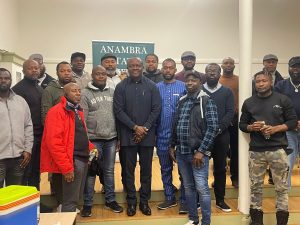Generation Z or often called Gen Z is now a major concern in the workplace.

Generation Z or often called Gen Z is now a major concern in the workplace.
Generation Z or often called Gen Z is now a major concern in the workplace. They are known for their unique values and approaches to work. As a generation that grew up in the digital era, Gen Z is familiar with social media platforms such as TikTok and Snapchat, and has a high awareness of environmental and social issues. Not only that, in the world of work, Gen Z has given birth to the trend of “quiet quitting,” the balance between personal life and work is a priority for them, and they do not hesitate to voice it, both directly and through social media. Business owners may initially see Gen Z as a generation that is more focused on personal interests and less committed to the organization’s larger goals.
This is reinforced by survey results showing that Gen Z is more comfortable moving from job to job compared to previous generations. Reporting from Fortune.com, companies can strategize to create a win-win solution with Gen Z workers. For example, at Jotform—a SaaS company that offers many products, from online form builders to no-code app builders—the company strives to understand their values and create a collaborative Work Culture, so that they can maintain their engagement and loyalty. What’s the strategy? Learning from Jotform’s strategy in responding to Gen ZThere are various steps that Jotform has taken to optimize Gen Z workers, here are the strategies.
- Fostering a sense of ownershipJotform believes in fostering a sense of ownership among Gen Z employees. Although they are very concerned about personal well-being, research shows that they are also good collaborators. They thrive in teams and see collaboration as a path to innovation. However, this generation also has a high sense of ownership of their work. They do not just follow orders, but also question the process and look for more efficient solutions, which can ultimately improve the overall performance of the organization.
- Implementing a cross-functional work systemPerformance can be optimal by implementing a work system in cross-functional teams consisting of five to seven people. They are given the freedom to collaborate and take full responsibility for their projects. The company also provides facilities, such as private offices, whiteboards, and so on to support their teamwork. Although the final decision remains in the hands of management, these teams are given full autonomy in determining how their work will be completed.
- Encourage collaboration in the officeWhile remote work is trending, Jotform encourages optimal collaboration while employees are in the office to help build employee loyalty, especially for younger generations. In-person interactions in the workplace provide greater opportunities for learning and mentorship, as well as foster synergy and creativity that are difficult to achieve through digital communication.5. Prioritize adaptation and processUltimately, adapting to Gen Z’s needs in the workplace is critical. Some leaders may struggle with new trends brought by Gen Z, such as more casual language and a focus on well-being. However, resisting these changes is like fighting an inexorable tide. Gen Z will soon dominate the workforce, and leaders who care about collaboration and innovation need to start adjusting to ensure this generation can thrive in their organizations.
- Loosening the hierarchyJotform also tries to loosen the rigid hierarchy by implementing a flexible leadership model. Research shows that Gen Z is less interested in traditional hierarchies and prefers a leadership model based on specific expertise for a specific task. At Jotform, these teams function like independent mini-companies, with leaders selected based on the needs of the project and the skills of the team members.
![]()





